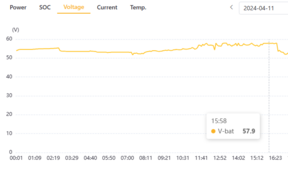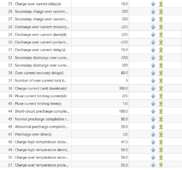jassdhali
New Member
Hi,
Just setup my system:
15 420w Jinko Solar Panels
5kW Sunsynk Hybrid inverter
Seplos Mason 48V 14.3kWh battery with 16 Grade A V3 LF280K EV
BMS setup advice thanks to @houseofancients
Has been supplying house for 8 days , all looks to be running fine - using Octopus agile tariff & daily cost is down two thirds
My SOC has been set to 95 & 15 & when grid charged overnight is all good.
However when panels get some sun (suprisingly) the battery pack goes up to 100%.
What can I change to stop it hitting the max? If screen shots required let me know.
Thanks for your time.
Just setup my system:
15 420w Jinko Solar Panels
5kW Sunsynk Hybrid inverter
Seplos Mason 48V 14.3kWh battery with 16 Grade A V3 LF280K EV
BMS setup advice thanks to @houseofancients
Has been supplying house for 8 days , all looks to be running fine - using Octopus agile tariff & daily cost is down two thirds
My SOC has been set to 95 & 15 & when grid charged overnight is all good.
However when panels get some sun (suprisingly) the battery pack goes up to 100%.
What can I change to stop it hitting the max? If screen shots required let me know.
Thanks for your time.






